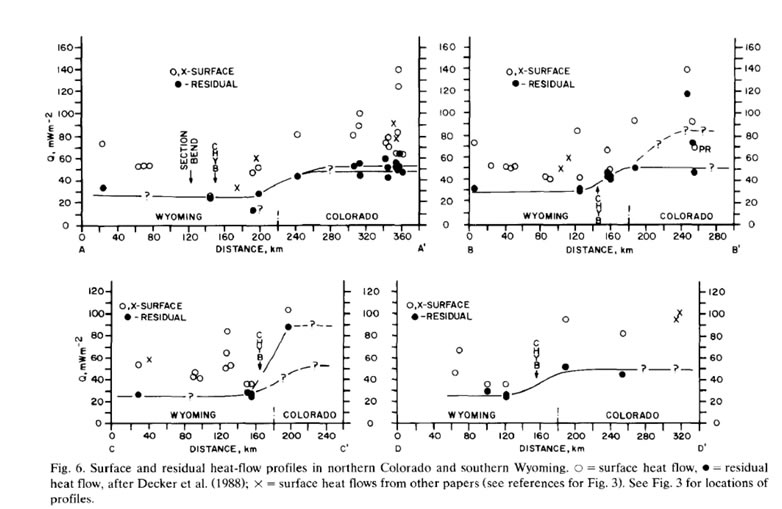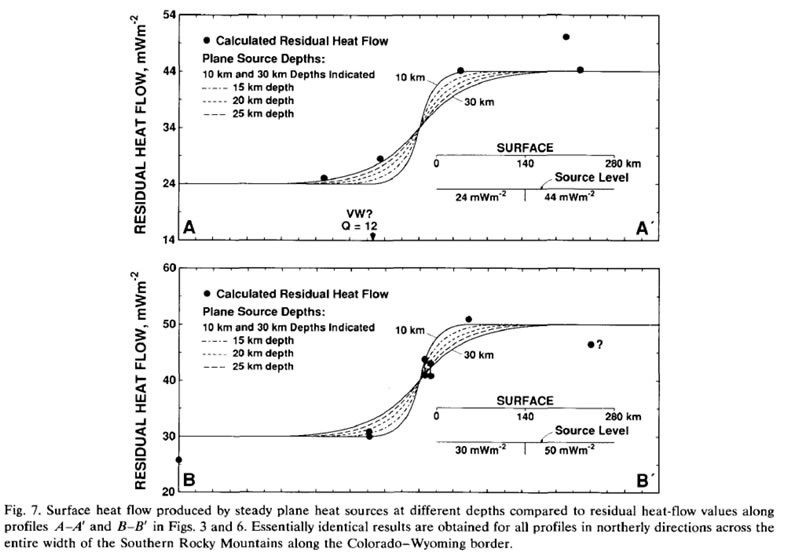
| Intro | Seismology | Heat flow | Gravity | Conclusions | References |
| Low velocity zone | Traditional techniques | ||||
| Mantle stratification (via receiver functions) | Admittance | ||||
| Coherence |
Heat flow
Heat flow (q) can be measured at and near the Earth’s surface to investigate the nature of the lithosphere. Heat flow is related to the geothermal gradient in a purely conductive medium:
q=-k dT/dz
where k is the thermal conductivity of the material and is free to vary as a function of depth. Archean cratons are characterized by low heat flow values (~35-40 mW/m2; [Djomani et al., 2001]). This low value is easily explained if the lithosphere-asthenosphere boundary (LAB) is an isothermal surface. It follows that a thicker conductive body with the same temperature change will have a lower thermal gradient.
Furthermore, [Drury, 1988] suggests that depletion of mantle lithosphere may reduce thermal conductivity. As can be seen from the equation for heat flow, above, decreasing k will linearly decrease q. Thus chemical depletion may contribute to the low heat flow observed on cratons.
In contrast to the 35-40 mW/m2 observed worldwide, the Wyoming craton has heat flow values of ~50 mW/m2 [Decker, 1995]. While modestly higher than the global average, the craton stands in stark contrast to the Front Range south of the Cheyenne Belt, where heat flow values average 85 mW/m2. Decker (1995) notes, however, that radiogenic heat production of surface rocks is much higher in the Colorado samples examined than those from on the craton. Moreover, the transition from low to high heat flow occurs over a narrow width (~50 km) and thus cannot be attributed to deep sources (>25 km; see figures below) because lateral diffusion of heat from deep sources would homogenize the surface heat flow.


Finally, estimates of the thermal character of the lithosphere from xenolith studies, surface heat flow, and radiogenic heat production of upper crustal rocks indicate that beneath at least the southern portion of the Wyoming Craton, the depth to the 1300 C isotherm, a popular candidate for the delineation of the thermal lithosphere, is less than similarly aged cratons [Artemieva, 2006]. Estimates for this depth are ~135 km just north of the Cheyenne Belt as compared to ~200 km for lithosphere of similar age across the globe.